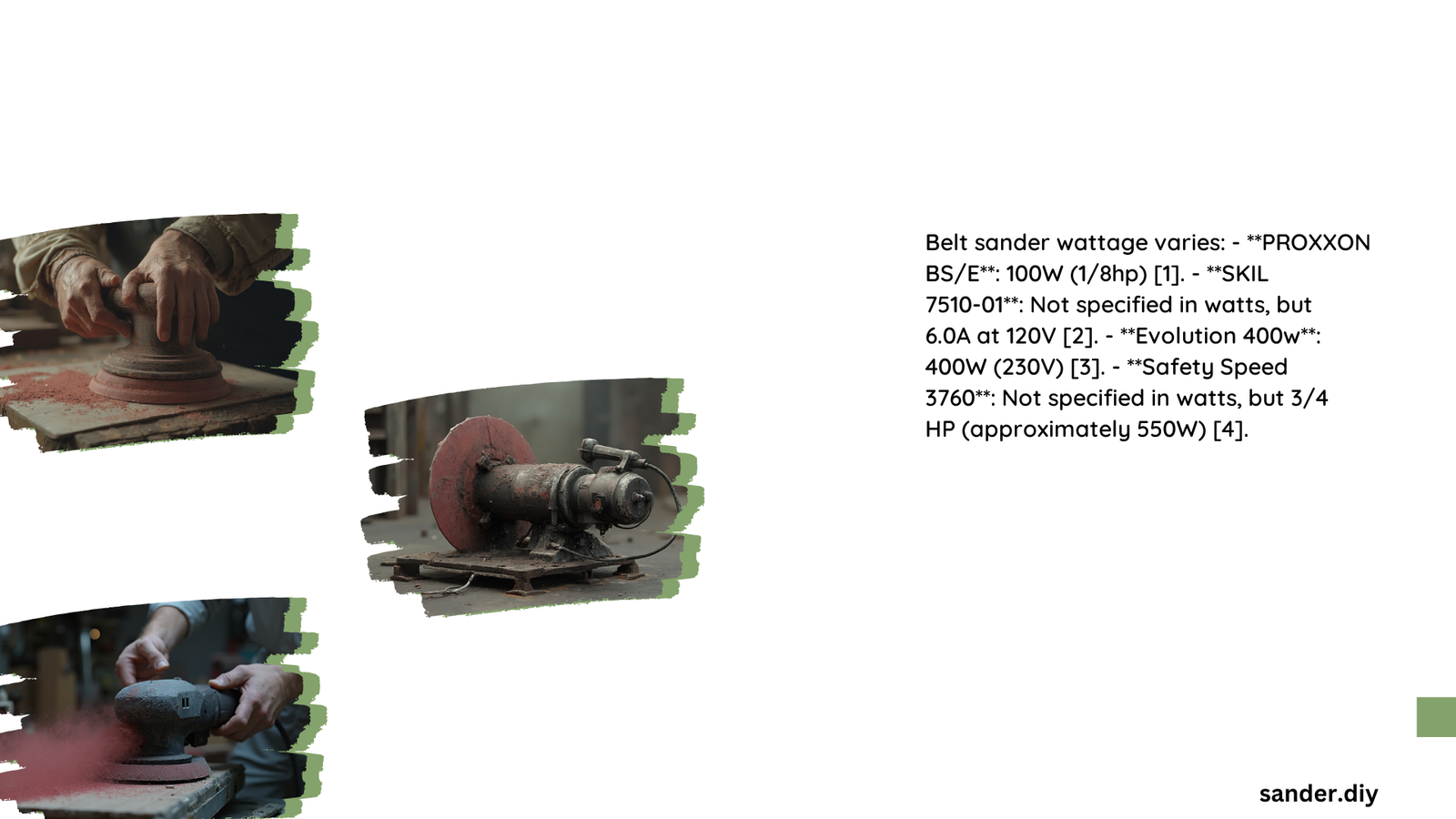Belt sander wattage determines the performance, efficiency, and capability of your sanding tool across various applications. Understanding the power requirements helps professionals and DIY enthusiasts select the right equipment for precise material removal, surface finishing, and optimal work productivity. From lightweight 500-watt models to heavy-duty 40-horsepower industrial sanders, wattage plays a crucial role in determining sanding effectiveness.
What Determines Belt Sander Power Requirements?
Belt sanders require different wattage levels based on specific work demands. The power needs vary significantly across applications, making it essential to understand the relationship between wattage and performance.
How Much Power Do Light-Duty Sanders Need?
Light-duty belt sanders typically operate within 500-1000 watts, suitable for:
– Fine woodworking projects
– Detailed surface preparation
– Minimal material removal tasks
| Sander Type | Wattage Range | Typical Applications |
|---|---|---|
| Compact 3″ Sanders | 500-1000 watts | Furniture refinishing |
| Hobby-level Sanders | 750-1200 watts | Small woodworking projects |
What Power Levels Work for Medium-Duty Applications?
Medium-duty belt sanders range from 1000-2000 watts, ideal for:
– General woodworking
– Home renovation projects
– Moderate material removal
Key characteristics include:
– Balanced power-to-weight ratio
– Versatile performance
– Suitable for most DIY and professional tasks
How Do Heavy-Duty Sanders Differ in Wattage?
Heavy-duty belt sanders demand significant power:
– Industrial models: 2000-40,000 watts
– Professional workshop sanders: 2000-5000 watts
– Wide belt sanders: Up to 40 HP (29,840 watts)
Factors Influencing Power Requirements
- Material hardness
- Surface area
- Desired removal rate
- Precision needs
What Impact Does Wattage Have on Sanding Performance?
Wattage directly influences:
– Material removal speed
– Surface finish quality
– Heat generation
– Overall operational efficiency
Performance Metrics:
– Lower wattage (500-1000 watts): Slower, precise work
– Medium wattage (1000-2000 watts): Balanced performance
– High wattage (2000+ watts): Rapid material removal
Which Wattage Works Best for Different Materials?
Woodworking Considerations
- Softwoods: 1000-1500 watts
- Hardwoods: 1500-2500 watts
- Exotic woods: 2000-3000 watts
Metalworking Requirements
- Light metal finishing: 1200-1800 watts
- Heavy metal preparation: 2000-4000 watts
How to Choose the Right Belt Sander Wattage?
Selection Criteria:
– Assess project complexity
– Consider material type
– Evaluate required precision
– Match power to specific task demands
Pro Tips for Optimal Belt Sander Wattage Usage

- Always match wattage to application
- Consider variable speed controls
- Invest in quality power tools
- Maintain proper ventilation
- Use appropriate safety equipment
Final Power Recommendations
| User Category | Recommended Wattage | Best Use Case |
|---|---|---|
| Hobbyist | 500-1200 watts | Light woodworking |
| Professional | 1500-3000 watts | Diverse projects |
| Industrial | 3000-40,000 watts | Heavy-duty work |
Remember: Wattage is just one factor. Consider ergonomics, brand reputation, and specific project requirements when selecting a belt sander.
Maintenance and Efficiency
Regular maintenance ensures consistent power delivery and extends tool lifespan. Clean air vents, check electrical connections, and replace worn components to maintain optimal performance.
Conclusion
Understanding belt sander wattage empowers users to make informed tool selection decisions, balancing power, efficiency, and precision across various applications.
